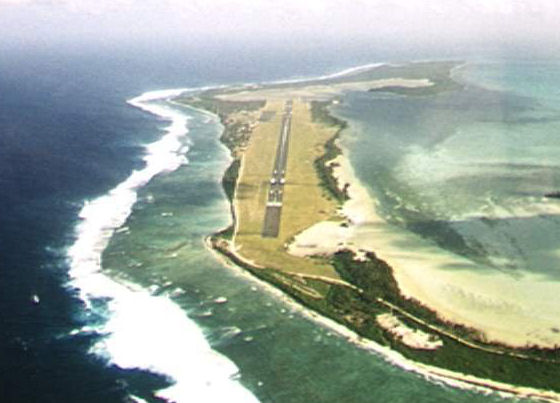Drowning islands: The plans for managed retreat
Sea-level rise increasingly forces people around the world to make plans to relocate to higher grounds, and with it come new challenges.
Australia: Cocos Islands

Many of the inhabitants of the islands are descended from Malay laborers who were transported there in the 1830s to work on coconut plantations.
Residents are outraged at the Australian government’s proposal to relocate hundreds of people from their island home within decades due to sea level rise.
The 27 tiny atolls that make up the Cocos Islands, which are located 2,936 kilometers (1,824 miles) west of Australia, are under increasing threat from coastal erosion and rising sea levels brought on by climate change, just like many other island nations.
Residents, water supplies, power plants, roads, and stores should all be moved within the next ten to fifty years, according to the federal government’s January proposal.
The most “viable option to protect lives in a socially, economically, and environmentally respectful way” is this “long-term managed retreat,” according to the report.
According to government estimates, sea levels along the Cocos Islands may increase by 18 cm (7 inches) by 2030 when compared to 1992 levels.
Australia should be doing everything it can so people who have lived on these islands for many generations can stay there. – Wesley Morgan, Climate Council fellow
Many of the 600 locals are descended from Malay laborers who were transported to the islands in the 1830s to work on the coconut plantations.
Before Australia gained sovereignty over the islands in 1955, the British colonized them in 1857.
The Shire of Cocos Islands’ chief executive, Frank Mills, expressed his disappointment that the government had not looked into long-term climate mitigation plans that would have allowed residents to remain on the island permanently.
“It is really disappointing and we are going to do what we can to challenge the Commonwealth and their views of the world,” he said. That could include legal action, he added.
Many people have been on Cocos Islands for three to five generations, and the decision to leave would not be easy for them, Mills said. “That is not an overnight decision.”
“Everything is involved in that decision: where they would go? Generations of people are buried on Home Island – would they be relocated to a suitable place on the mainland?” Mills asked.
The proposal has not yet been finalized and is available for community consultation, according to a government statement.
Wesley Morgan, a fellow of the non-profit Climate Council, said the Cocos Islands are just one of many low-lying island nations that are being forced to think about their future.
A historic agreement between Australia and the Pacific nation of Tuvalu went into effect last year, granting its citizens the right to relocate to Australia in the event that their homeland is overtaken by rising sea levels.
Since 2014, Fiji has been moving communities to higher elevations.
“Australia should be doing everything it can so people who have lived on these islands for many generations can stay there and maintain their culture in their homelands”, Morgan said.
He added that this included reducing emissions and moving away from gas and coal.
With a high degree of confidence, the UN’s Intergovernmental Panel on Climate Change has concluded that human-induced climate change is to blame for the global mean sea level rising at rates not seen in at least 3,000 years.
Panama: Gardi Sugdub

Delfino Davies declares, “If the island sinks, I will sink with it,” his smile never faltering.
The only sound in the small museum he runs, which chronicles the life of his community in Panama, the Guna, is the swish of his broom across the floor.
“Previously, you could hear kids yelling… He claims that there is music everywhere and that neighbors are fighting, but that all of the noise has now vanished.
Due to climate change, his community—which resides on the small, low-lying island of Gardi Sugdub—is the first in Panama to be relocated.
Scientists estimate that rising sea levels will make the island uninhabitable by 2050, posing an “imminent risk” to the government.
About the Author: CLIMATE STATE
POPULAR
COMMENTS
- Robert Schreib on Electricity generation prices may increase by as much as 50% if only based on coal and gas
- Robert Schreib on China made a historic commitment to reduce its emissions of greenhouse gases
- Lee Nikki on COP30: Climate Summit 2025 – Intro Climate Action Event
- Hollie Bailey on Leaders doubled down on fossil fuels after promising to reduce climate pollution
- Malcolm R Forster on Mythbusters tests global warming theory – does CO2 warm air?